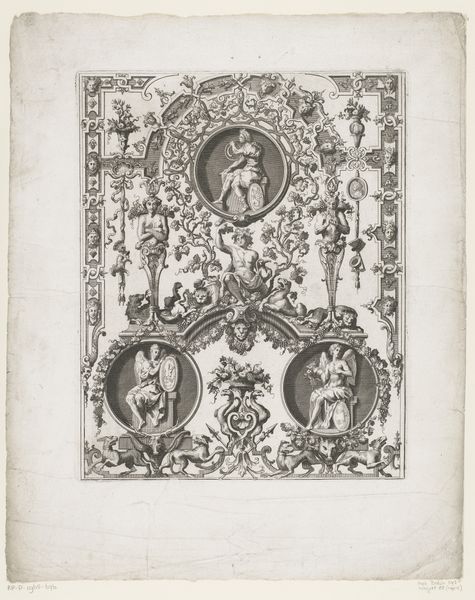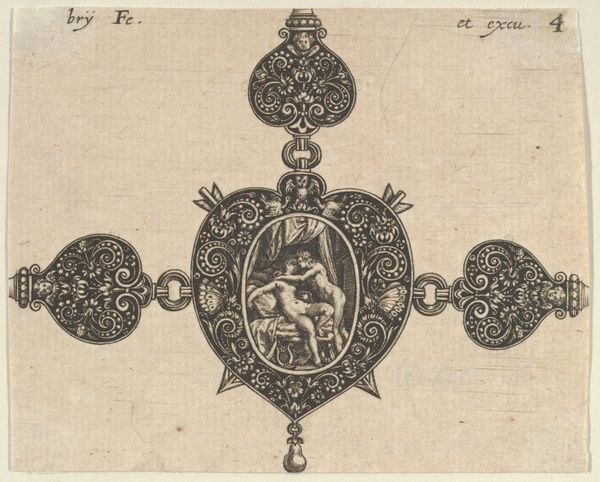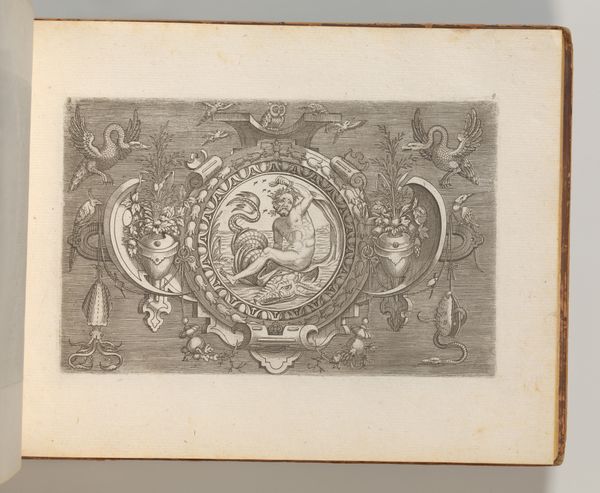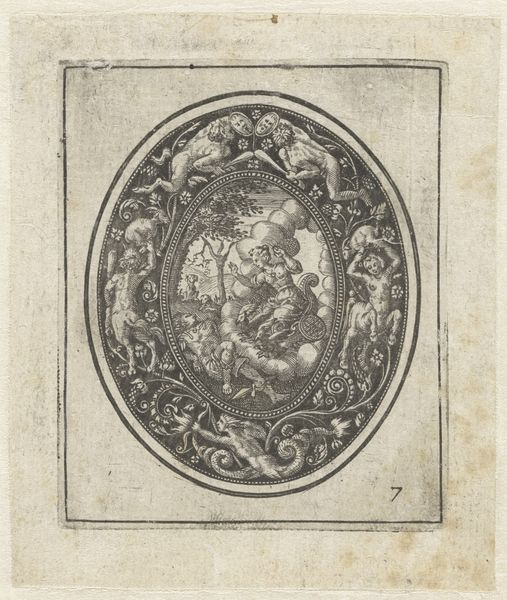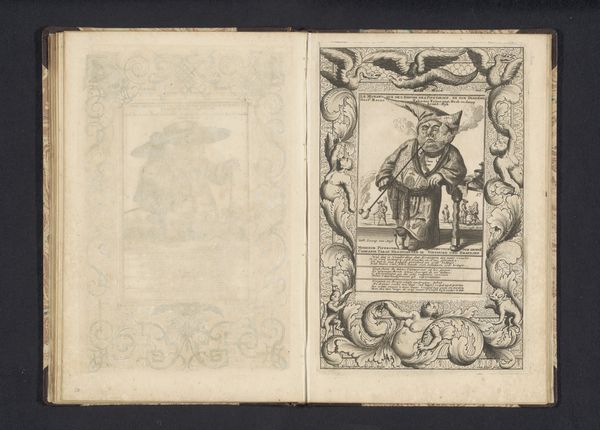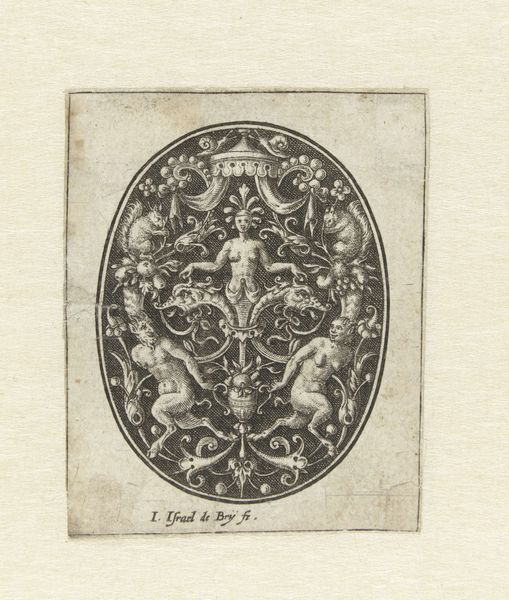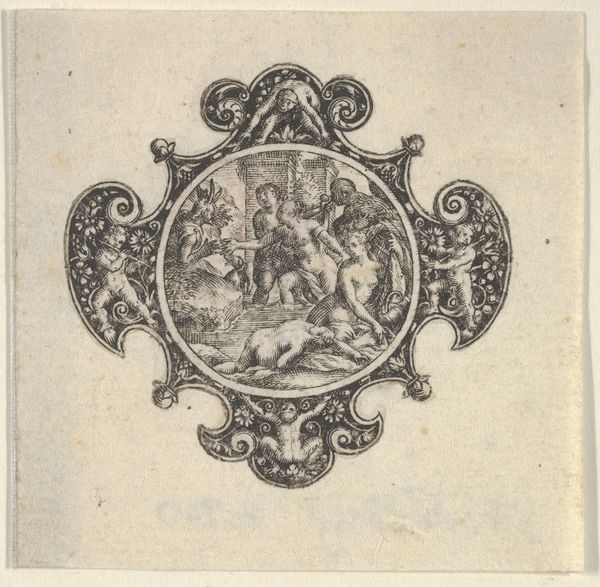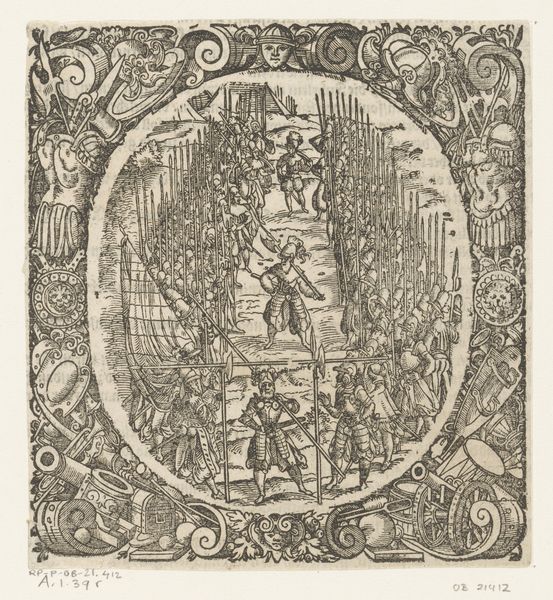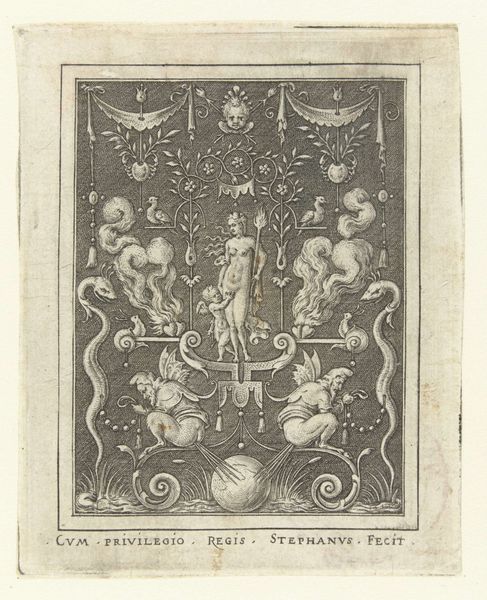
Corona delle Nobile et Virtuose Donne, Libro Terzo, page 27 (recto) 1620
0:00
0:00
drawing, print, ink, engraving
#
drawing
# print
#
figuration
#
11_renaissance
#
ink
#
decorative-art
#
engraving
Dimensions: Overall: 5 1/2 x 7 11/16 in. (14 x 19.5 cm)
Copyright: Public Domain
Editor: This is a page from Cesare Vecellio’s “Corona delle Nobile et Virtuose Donne, Libro Terzo,” dating to 1620. It’s an engraving in ink. It looks like it depicts a classical figure, maybe a goddess? I am fascinated by the intricate border designs that enclose the central image. How do you interpret this work? Curator: The figure does seem to evoke a classical ideal, doesn’t it? Consider how prints and engravings like this functioned during the Renaissance. They weren’t merely decorative. They served as vital conveyors of knowledge, visual culture and social mores. The repeated motifs create a kind of cultural echo chamber that connects the designs of the borders and that in the centre image. What do you make of the torch? Editor: Well, it could symbolise enlightenment, maybe knowledge being passed down? Is the winged figure also symbolic, do you think? It seems smaller in scale relative to the other figure... Curator: Exactly! Consider it less a portrait and more of an emblem. Think about Renaissance emblem books, laden with symbolic imagery designed to teach moral lessons and encode cultural values. The figure may symbolize something like divine love. The borders are essential, grounding the image within a culturally understood decorative language. And, the small figure gives us a personal touch; each viewer has individual associations with this, triggering varied psychological responses. Editor: I hadn't considered the work as a set of emblems and symbols offering moral guidance rather than decoration alone! Thanks, that gives me a much richer appreciation of its context and deeper meaning. Curator: Indeed. Renaissance imagery operates on multiple layers, offering access to a culturally coded visual world for those who knew how to read it, but the emotions still come through to modern audiences. It really is something, isn't it?
Comments
No comments
Be the first to comment and join the conversation on the ultimate creative platform.
